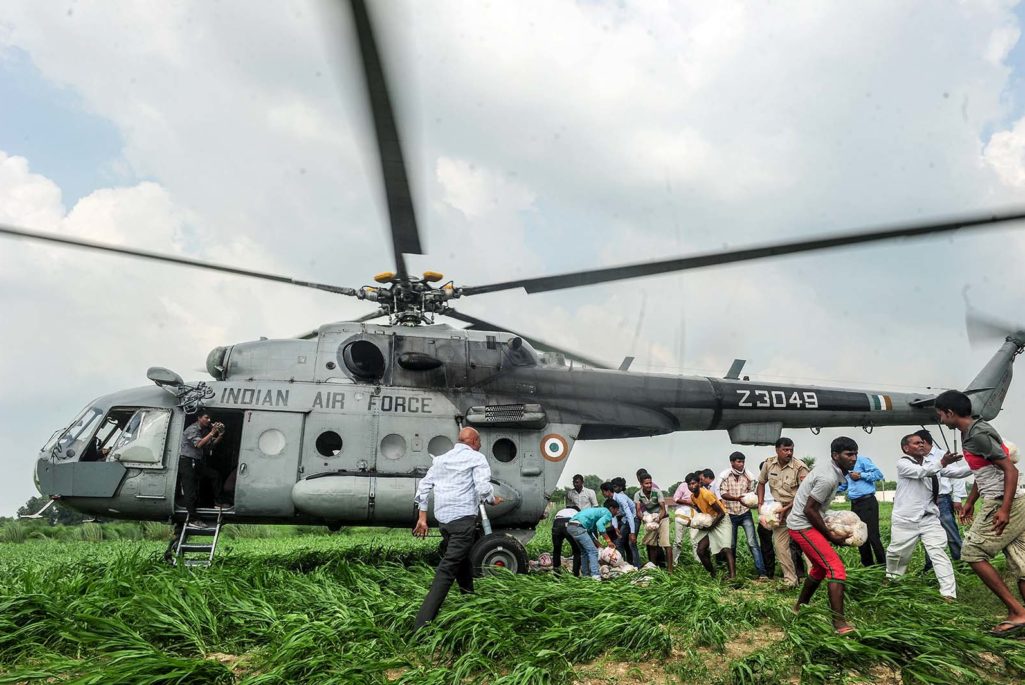Investing in Pre-Crisis Risk Management and Easing Post-Disaster Effects

TOPSHOT - Indian flood-affected villagers receive relief supplies distributed by defence personel from an Indian Air Force helicopter, near Allahabad on August 25, 2016.
Photo: Sanjay Kanojia/AFP/Getty Images
Since natural disasters can strike anywhere and anytime, making far-sighted preparations is much more effective than scrambling to respond to a crisis. I recognized this after Hurricane Mitch ravaged Honduras and my grandmother had to be evacuated because the local river swelled to the second floor of her home.
As climate change intensifies extreme weather events across much of the planet, countries are seeking the World Bank Group’s support to improve both their physical and financial resilience to disasters.
We are increasingly working with governments to devise sound financial planning and risk management before a disaster strikes, not just to assemble financing to help countries recover in its wake.
Market-based instruments such as insurance can act as shock absorbers in case of natural disaster, helping countries avoid the worst of a crisis’ financial impact; however, governments often may not have the appropriate incentives to invest in financial solutions in advance of a disaster. Lawmakers who are asked to devote part of a nation’s budget to insurance premiums are often under popular pressure, understandably, to spend money on more immediate problems. Yet neglecting pre-crisis preparations can carry a hefty price tag.
Here are five reasons why investing in pre-crisis financial risk management can ease post-disaster recovery needs:
- Disasters impose painful costs on societies, especially the poor and the most vulnerable. Insurance markets are underdeveloped in many emerging economies, with catastrophe risk insurance penetration usually under 5 percent. Considering that only 17 percent of people in developing countries have access to financial savings and insurance, households and small- and medium-size businesses bear most of the losses themselves.
- Insurance solutions are essential in designing comprehensive disaster-risk financing strategies. Insurance delivers capital to the places where it’s most needed, at the moment when it will be most effective. By putting a price on it, insurance also incentivizes communities to better manage and reduce risk.
- There is no one-size-fits-all product that’s suitable for all economies. The Bank Group has an array of financial products and advisory services that can be tailored to each country’s needs, ranging from access to market-based solutions such as insurance to capacity-building services to improve understanding of these financial solutions.
- Developing countries are aware of their need to improve financial resilience to disasters and to plan ahead. Risk modeling is gaining traction. The Bank Group is working with risk modeling firms to develop catastrophe models, such as the first catastrophe risk model in the South Pacific, which now supports the Pacific Catastrophe Risk Insurance Program (PCRAFI). This cat risk model builds on the Pacific Risk Information System, the first regional database with more than 3.5 million georeferenced buildings and infrastructure in 15 Pacific Island countries.
- The private sector is indispensable in helping countries and communities manage risk in advance of disasters. Private reinsurers and investment banks have innovative products that offer sovereign financial solutions to countries against natural hazards; however, many countries often need assistance in building institutional capacity to be able to evaluate whether proposed products are effective, well-priced and fit with a government’s existing disaster strategy.
Catastrophe risk pools are a good example of effective private-public partnerships. Sovereign catastrophe risk insurance pools in the Caribbean and Pacific provide aggregate coverage of more than $650 million annually to 21 countries. Also, the Turkish Catastrophe Risk Insurance Facility and the South East Europe and Caucasus Catastrophe Risk Insurance Facility build market infrastructure for private disaster risk insurance.
To make financial risk management work as it should, many developing countries need to:
- Strengthen basic insurance laws, adopt a risk-based regulatory framework and improve supervision and oversight for the insurance sector, especially for catastrophe risk insurance.
- Build up local capacity and improve scientific/technical training so adequate expertise exists within countries to help decision-makers, such as ministries of finance, and better understand risk models and financial analysis to make informed decisions on the financial management of disasters.
- Adopt a culture of risk management, asking the “what if” questions and long-term thinking that extends beyond the political cycle.
At the World Bank Group, we know that investing in development must account for disaster and climate risks. To practice what we advise, we now screen all projects funded by our concessional lending arm, International Development Association, for climate and disaster risk and plan to expand screening to financial services we provide to middle-income countries and for private sector investment operations.
To be truly effective globally, a strong partnership with the insurance industry can further strengthen countries’ resilience and reduce human vulnerability, while keeping hard-won development gains on track.
This piece was first published on the World Bank blog.




